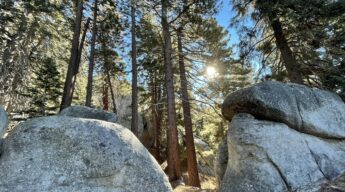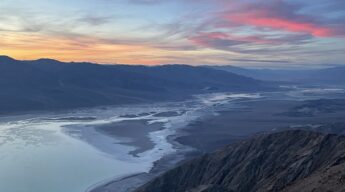Humans occupy a lot of space in America and around the globe. This includes impressive communities and infrastructure, but it has left many of our natural habitats fragmented. As a result, the natural world is suffering significant consequences. This includes extinction threats for many species, impacts to our natural resources, and major safety concerns for both wildlife and humans. In a world shared with other species but dominated by people, wildlife crossings are one of many practices being implemented by communities and governments to restore and reconnect natural habitats that have been separated by human development.
Quick Info
- Wildlife corridors and crossings connect natural habitats that have been fragmented by developments and other human activity.
- They improve ecosystem biodiversity and enable different species to successfully migrate, breed, find food and water, and adapt to changes.
- The largest wildlife crossing in the world will be the Wallis Annenberg over Liberty Canyon in Los Angeles, CA – projected completion 2025.
- The are currently ~1000 manmade wildlife crossings in the US, with over 14 states implementing initiatives or legislation.
- Congress recently passed the Wildlife Corridors Conservation Act, which will implement a national wildlife corridor program.
- Local jobs and economies benefit greatly from these projects.
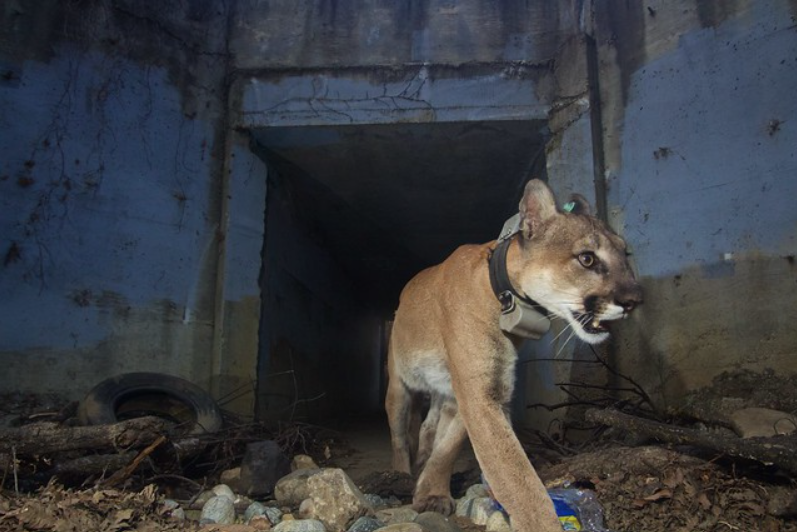
What Is A Wildlife Corridor Or Crossing?
Wildlife corridors are naturally occurring landscapes that connect one wildlife habitat to another, such as animal migration routes.
Wildlife crossings are manmade structures like bridges and buffers which also connect one wildlife habitat to another.
In the end, they aim to serve the same multi-use purpose which is to improve habitat connectivity and allow wildlife populations to successfully complete their lifecycles. This includes everything from migration, pollination, finding food, finding coverage, nesting, and mating with other populations to increase genetic diversity. They also aim to increase economic activity through jobs and tourism, and improve the safety of humans and wildlife by reducing vehicle collisions and unintended animal encounters.
It might be surprising that this is an issue given we have 640 million acres of public land and protected areas like National Parks and National Wildlife Refuges. Some of it even cherished for hosting wildlife like the grizzly bears of Glacier National Park. Unfortunately, much of our public land is also isolated or fragmented by highways and human development, leaving the wildlife in these areas without safe passage to other habitats. This is where wildlife habitat corridors or crossings can make a difference, both ecologically and economically.
Types Of Wildlife Corridors And Crossings
Wildlife corridors can take the form of animal migration routes through mountain passes, rivers and streams for aquatic species, meadows, and other natural connections between wildlife habitats. This also includes migratory airways for pollinators like the 3000 mile journey for monarch butterflies, or the vast flocks of Canadian geese.
Wildlife crossings can take the form of huge structures like bridges, overpasses, or underpasses across major highways and busy roads. It can also be small buffers that are made with fences or by planting trees, shrubs and other vegetation. Other times culverts can be used to help direct amphibious and aquatic species underneath roads. Removing dams also helps to restore the flows of rivers and creeks, opening safe passage for various animal species.
Depending on the scope of a project, the size of the crossing or corridor can vary:
Regional (>500m wide): connecting major land masses such as migratory pathways.
Sub-regional (>300m wide): connecting larger vegetated landscape features such as ridgelines and valleys.
Local (some <50m): connecting remnant patches of woodland, marshes, and wetlands.
With so many unique habitats, species, and migration routes, there is no one-size-fits-all approach to wildlife corridors. As we invest more in these projects we’ll hopefully see iterations and designs that suite all types of wildlife.
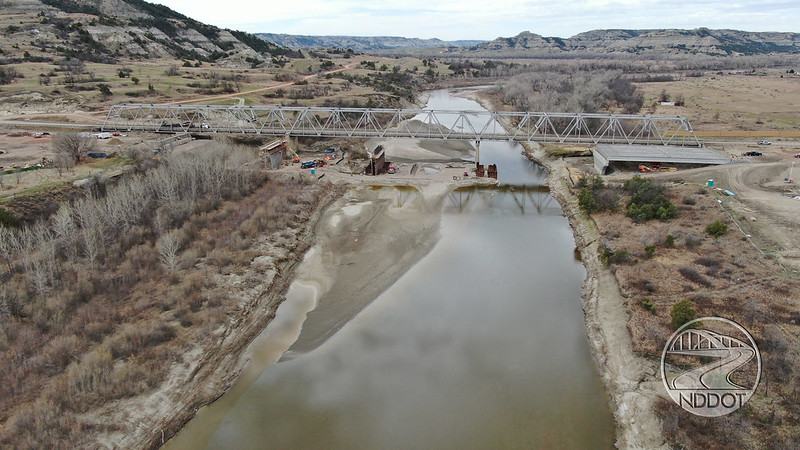
Why Do We Need Wildlife Corridors And Crossings
Humans are present virtually everywhere. Roads, highways, urban developments, industrial and commercial centers, agricultural fields, and other structures. Of course, these serve critical needs. People need homes, food from farms, hospitals for emergency care, and establishments for jobs and services. But the approach, scale and speed of these developments have left natural habitats fragmented, isolating wildlife populations and reducing biodiversity. This negatively impacts the survival rate of species, access to clean natural resources, and creates risks to our safety, jobs, and communities.
Some of the more critical threats from habitat fragmentation include:
Loss of biodiversity: When habitats are isolated, it makes it difficult for things to transfer in and out of the area – seeds, pollen, eggs, food, and other resources. This diminishes the biodiversity of an area. A lack of biodiversity means a less ecosystem resilience, and more susceptibility to invasive and antagonistic species, starvation, diseases, and other threats. This affects humans in the same way – fewer pollinators for our crops, greater soil erosion and flood risk, less shade and temperature regulation, and more pollution in our public areas.
Isolated gene pools: Isolated populations lack genetic diversity. As a result, wildlife will either fail to breed or begin inbreeding, which causes genetic defects and eventually extinction. For example, the Santa Monica Mountains of CA are split by highway 101. In recent years the mountain lion populations there were showing genetic defects due to inbreeding. Now, the new (in progress) Wallis Annenberg Wildlife Crossing will enable these mountain lions to expand into other territories, find new mates, and diversify their gene pool. This will also allow them to travel the long distances required to find and follow food sources. Florida has also made significant efforts with the Florida Wildlife Corridor Act to protect the Florida Panther, another iconic and threatened animal.
Increased extinction risks: A loss of habitats and biodiversity is a key driver in species extinction. In 2021, there were 22 species of wild animals and plants that went extinct in the US alone. When extinction does occur, the ecosystem becomes unbalanced – once predated species can become overpopulated, or invasive species can more easily establish themselves. For humans, wildlife extinction can also mean a loss of food sources, a loss of medicine, or the loss of an entire economy like fishing and tourism. Interestingly, it was discovered that American woolly mammoth populations existed as few as 3600 years ago and had migrated to remote areas of northern Siberia. But due to isolation and lack of suitable habitats they too started inbreeding, developed genetic abnormalities, and became extinct. To date, over 650 species in the US have gone extinct – 150 officially extinct, the other 500 “missing in action” and most likely extinct.
Less resilient ecosystems: Isolated wildlife has much less resilience to potential disasters or environmental changes. With the inability to move, floods, wildfires and diseases are a much greater threat. Environmental changes also demand adaptability from wildlife, such as bears or plant species moving higher up in altitude for more suitable climates. Without established corridors or crossings, wildlife cannot respond properly to these environmental changes, whether caused by humans or not.
Human-wildlife vehicle collisions: Around 1-2 million collisions between cars and wildlife occur each year, causing 25,000+ injuries, 200 human deaths, and 1 million animal deaths. This costs the US $8 billion annually. That’s a bad result for both wildlife and people. Everything from large and small mammals like moose, deer, and raccoons to fish and amphibians like salamanders. Of course, these animals are not crossing the roads and highways arbitrarily. They need to do it. Reducing collisions makes sense from any side of the equation.
Human-wildlife encounters: This has to be expected to some degree. After all, we share this world with other species. Certain activities encourage encounters like hunting, fishing, or wildlife studies. But additional human developments can force these interactions as wildlife lose habitat. Mountain lions in your backyard or wolves crossing a busy highway should not be a frequent occurrence. Besides the obvious threat to human safety, this can also lead to euthanizing the animal. A tragic fate for an animal that most likely would have rather avoided your dwelling in the first place. Wildlife crossings give them more room and shelter to move undetected, and hopefully undisturbed.
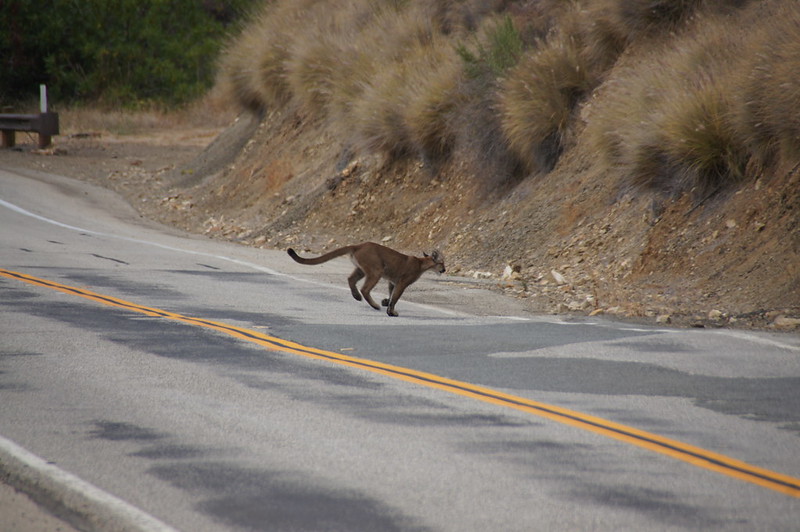
The Benefits Of Wildlife Corridors And Crossings
Wildlife corridors and crossings are not the ultimate and final solution to the aforementioned issues. But they are critical to the survival and safety of humans and other species. This includes:
Improved genetic diversity: With the room to move about, wildlife can more successfully complete its life cycle. This means finding new mates for breeding and expanding their territory. The territory range is completely different for different species. Some caribou herds can travel up to 2,700+ miles each year, but other species may live their lives out in a single patch of forest. In either case, these species require genetic diversity for successful breeding and survival, and wildlife crossings make that more possible.
Improved biodiversity: Wildlife corridors help improve biodiversity by allowing the free movement and transfer of other animals, organisms, seeds, and pollen. Healthy ecosystems attract wildlife visitors and residents who balance everything out. Predators and prey, fungi and bacteria, water sources, foliage and nesting areas, pollinators. Reduce one of these and you reduce the biodiversity. Long term studies (18 years) on small patches of habitat (2.5 acres) in South Carolina demonstrated that connected habitats had an average of 14% more biodiversity than areas that were not connected.
Improves access to food and water: By connecting habitats, wildlife can respond and adjust to their needs for food such as following a migratory herd or moving locations for the season. These benefits are not restricted to just wildlife. Hunters and anglers alike depend on healthy animal populations and their natural lifecycles, including large mammals like the wild elk migrations in the Rockies, or the salmon spawning up in Alaska.
More coverage and waystations for wildlife: The meadows, rocks, trees and shrubs that make up a natural landscape create excellent coverage and waystations for moving or migrating wildlife. This aids in giving many smaller animals protection from predators, or provides ideal nesting grounds for both terrestrial and aquatic species. This also helps our avian friends who need areas to rest and stop along their journeys in the 4 major bird migration paths of North America, the Avian Superhighways. National Wildlife Refuges and other public lands play an important role in supporting this connectivity.
Less wildlife-vehicle collisions and encounters: With many crossings already implemented we have clear evidence of their improvements to safety. In a specific area of Wyoming, wildlife collisions cost the State more than $500 million dollars annually. After building several types of wildlife crossings along a 12 mile stretch of highway, wildlife vehicle collisions dropped more than 80%. The crossings are now being utilized by more than 5000 pronghorn and mule deer annually. Economically, this will pay the state back nearly 50 years before the crossing reaches it’s lifespan of 75 years. In a state where nearly 20% of all vehicle collisions are with wildlife, this is nothing to sneeze at.
Jobs and economic benefits: By building wildlife corridors and crossings we are not only creating new jobs, sourcing local materials, and generating tax revenue, but we are also helping to maintain the very ecosystems and wildlife populations that tourists, recreationalists, hunters and anglers depend on. Imagine the impact it would have on local communities if we were to lose the iconic elk herds of Colorado due to loss of habitat range. In total, the outdoor recreation industry contributes nearly ~1 trillion USD to the economy each year. That’s a lot of economic output for local communities and jobs.
Natural disaster resilience: Flooding and other natural disasters can be exacerbated by roadways and other human activities. But as we build wildlife crossings, the use of natural vegetation builds resilience to them. A healthy system of shrubs and trees develop a strong root system that helps prevent soil erosion and reduce flooding risks. Or natural fields and meadows against a forest edge can also serve as key fire breaks to prevent the spreading of wildfires. Safer for wildlife and humans.
Reduced pollution: More roads and developments lead to poor air and water quality. This happens from the emissions of cars and buildings nearby, as well as stormwater runoff that runs through our streets and contaminates our waterways. Wildlife crossings and corridors improve air quality with the oxygen generation, and carbon sequestering provided natural vegetation, trees, and shrubs. They might also promote a natural wetland or estuary which filters water for ourselves and wildlife. In some cases, noise pollution may can be significantly reduced with barriers of trees between areas. Even heating and cooling costs can be lowered from the shade of trees and plants, helping to reduce the urban heat-island effect. Plus, it’s more aesthetically pleasing to see nature integrated with our human world.
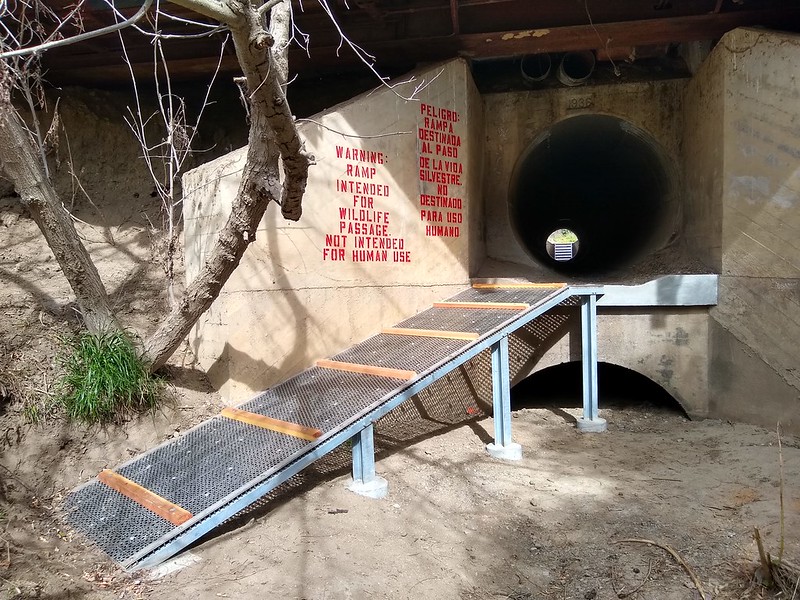
The Consequences Of Wildlife Corridors And Crossings
While we advocate for wildlife corridors and crossings, it can be important to understand some of that challenges that may be introduced:
Edge effect: When two habitats meet you’ll have an “edge.” Like when a meadow meets a forest. These areas are susceptible to the “edge effect.” This simply refers to the increased ecological activity that happens on these boundaries. This can be either good or bad. However, an undesired consequence of this is creating more channels for invasive species to enter an ecosystem, or increase the risk of spreading disease from one wildlife population to another. Invasive species can have highly detrimental impacts, such as the nutria rodents in the Chesapeake Bay, or invasive garlic mustard plant in the midwestern US. This should be a key consideration when building a new wildlife crossing.
Examples Of Wildlife Corridors And Crossings In The US
Yellowstone to Yukon Conservation Initiative (Y2Y): This is one of the more ambitious wildlife corridor initiatives. The goal is to make a connected series of habitats in the greater Yellowstone ecosystem, which ranges from Yellowstone National Park in the US, up to the Yukon territory in Canada.
Wallis Annenberg Wildlife Crossing: The largest wildlife crossing ever built to date, this will connect fragmented areas of the Santa Monica Mountains near Los Angeles, CA. This crossing is critical to safeguard the mountain lion populations in California.
Highway 93 in Montana: This is an ongoing series of projects and crossings on a 76 mile stretch of highway 93 in Montana, which includes 81+ wildlife crossings from overpasses, small culverts, fencing, and other installations.
Culverts in Monkton, Vermont: Two culverts were famously installed on a road in Vermont to allow for the crossing of blue-spotted salamanders and other key amphibians that call Vermont home. In a span of two months more than 2,200 amphibians used these culverts. Even the small projects make a difference.
Highway 85 Wildlife Underpass & Crossing in North Dakota – The first wildlife underpass and crossing in the state, helping moose, elk, deer, and bighorn sheep move through the Badlands of North Dakota near Theodore Roosevelt National Park. Since completion in 2021, it has seen hundreds of animals approach and successfully cross.
Other great examples:
The Irvine-Laguna Wildlife Corridor
The I-15 Mojave Wildlife Crossings
Route 44 culvert in Massachusetts
Lower Rio Grande National Wildlife Refuge in Texas
Wildlife crossings can also lead to friendships and adventures, evident from the culvert in Santa Cruz used by the Coyote and Badger duo:
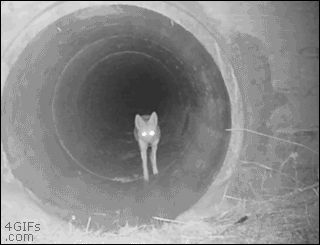
Current Government Action And Legislation
National Wildlife Corridors Conservation Act: This landmark bill that passed in 2019 had bipartisan support. This bill “establishes a National Wildlife Corridor System and provides for the designation and management of such corridors on federal land and water. A corridor means a feature of the landscape or seascape that (1) provides habitat or ecological connectivity, and (2) allows for movement or dispersal of native or noninvasive fish, wildlife, or plants. Indian tribes may nominate a corridor within their land to be included in a Tribal Wildlife Corridor.”
State:
Florida Wildlife Corridor Act
Vermont Critical Paths Project
California Safe Roads and Wildlife Protection Act
The Safe Crossings for Colorado Wildlife and Motorists Act
The Wildlife Crossings Project provision of the Transportation Bond Bill
Nevada Wildlife Crossings Account AB112
New Hampshire Wildlife Corridors
New Mexico Wildlife Corridors Action Plan
Oregon Wildlife Corridor Action Plan
Utah Wildlife Migration Initiative
Virginia Wildlife Corridor Action Plan
Ensuring Connectivity For Washington Wildlife Through Safe Passages
Wyoming Wildlife and Natural Resource Trust
Final Thoughts On Wildlife Corridors
Are habitat fragmentation, isolation, inbreeding, invasive species, natural disasters, and extinction all part of the natural world and processes? Of course. Earth’s 4+ billion year history is rife with climate disasters, mass extinctions, and ecological mashups that alter the functions of ecosystems. But never has an extinction of this scale been caused primarily by a single species. The loss of habitats and biodiversity are some of the greatest threats to our wildlife, resources, safety, and economy. When other species can no longer thrive, then neither will we. This stresses the importance for wildlife corridors and crossings.
Funding, budgets, and time are all part of the challenge. But with recent national legislation with bipartisan support, and all of the great projects that have been implement so far, it seems that most understand the value of wildlife crossings. This is encouraging to see. We have plenty of roads for humans. Let’s build some for the turtles.
Enjoy the journey – J. Wasko
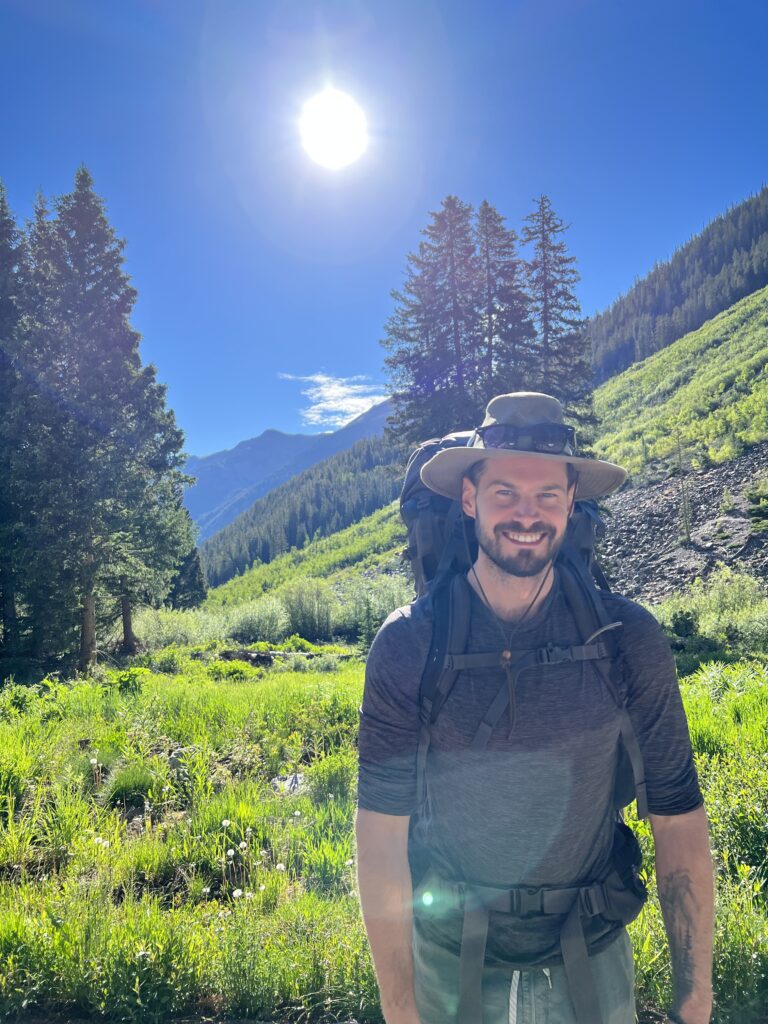
About the author
Jeremy Wasko has been exploring our public lands for over two decades. with thousands of miles and hundreds of camping trips completed. Through his adventures, he discovered that our public lands are more than just places to camp and recreate. They are cultural and historical sites, sacred places to different peoples, and the very sources of our clean water, air, and other critical resources.
He created Magna Terra to share his knowledge on how to explore and enjoy our public lands, and also how to protect and conserve them for future generations.
Learn more about Jeremy and the founding of Magna Terra here.
